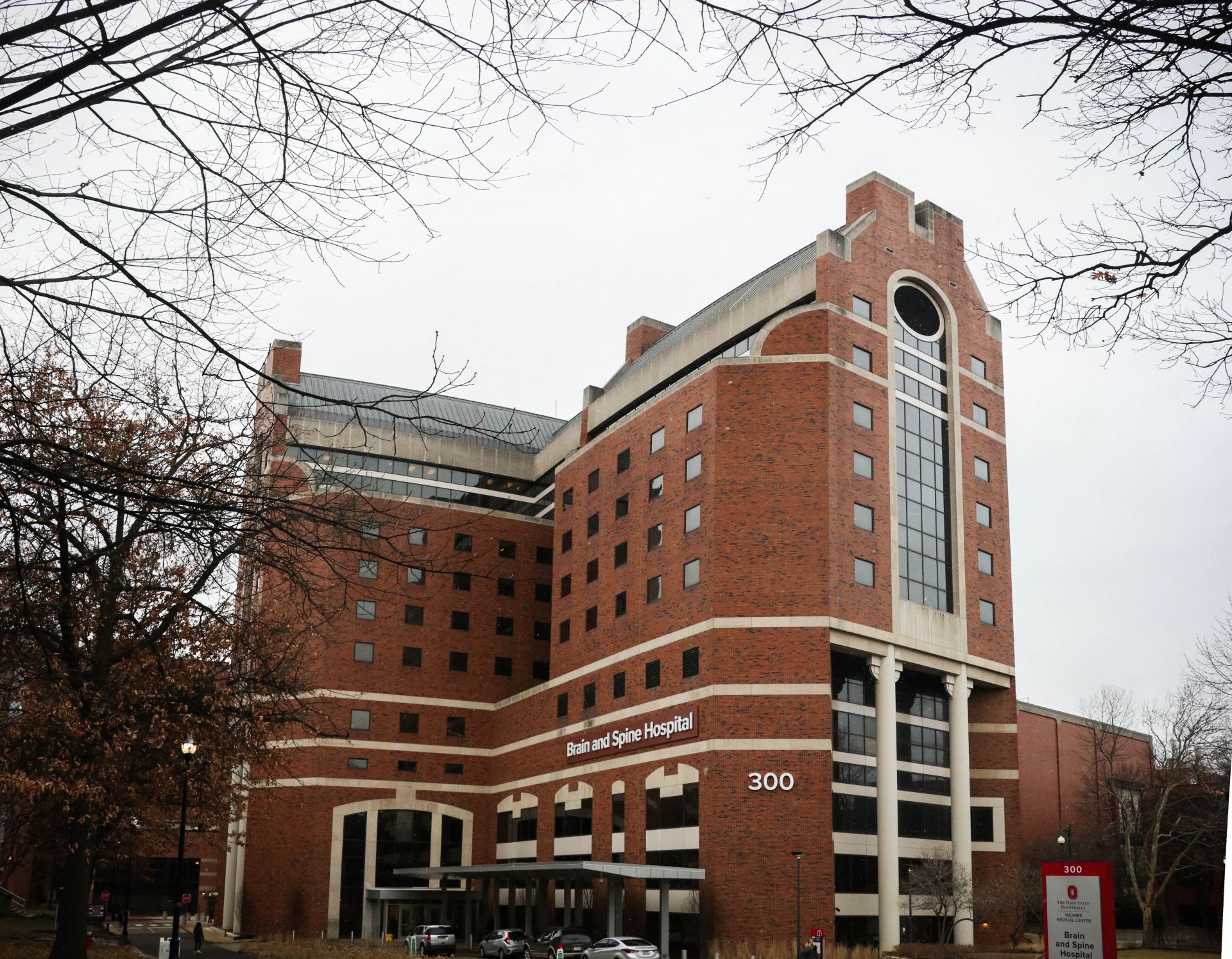
The Ohio State Brain and Spine Hospital located on W 10th Ave brings physicians, nurses and scientists together to research and treat patients with brain and spine disorders. Credit: Jack Westerheide | Photo Editor
MiChaela Barker knows how important having a support system in college is, especially as a minority student in medical school, where the demand of studying and course work is daunting.
“As a minority who’s going through things like racism, prejudice, people’s internal biases or even just cultural differences, other people don’t understand,” said Barker, a fourth-year in public health and president of the Minority Association of Pre-Medical students. “Having a group on campus is to have not only a safe space to talk about the academic and extracurricular struggles, but the personal struggles, as well.”
The College of Medicine recognizes the hardships many minority students face in the field of medicine and has implemented several changes within its diversity enrollment practices in recent years. A major change includes more emphasis on minority enrollment, an action which has led to national recognition.
In a first for any university, three of Ohio State’s medical colleges have been named Insight into Diversity 2017 recipients of the Higher Education Excellence in Diversity award.
Barker said being a minority medical student can often come with not feeling like an individual and more like a representative of an entire culture or ethnicity, adding a strong support network can help combat the stress of being a minority student in the field.
“When you come late to class, it’s like, ‘Oh, of course the black person is late’ or if you don’t do good on a test it’s like ‘Oh, of course this minority isn’t doing well in this class,” she said. “It feels like you need to prove yourself to everyone and that if you don’t do well it’s a representation of your entire culture versus you just doing poorly as a person.”
Quinn Capers, the College of Medicine’s associate dean for admissions, has worked with students and faculty to change the medical school’s admissions process. In the 2014-15 academic year, minority enrollment for the college was 11.1 percent. During the 2015-16 academic year it was 16.4 percent, according to data from the Association of American Medical Colleges.
Changes include removing photos from applicants’ files, anonymous voting by the admissions committee and the addition of new minority members to the 140-person selection committee. Additionally, Capers and the college created a phrase and motto to be put at the forefront of its application and admittance processes, “Diversity saves lives.”
Perhaps the most noticeable change is the full implementation of holistic review, a process by which the overall experience and aptitude of prospective students is given the same weight as their grades.
“I wouldn’t classify [diversity initiatives] as recent,” said Leon McDougle, the associate dean for diversity and inclusion at the College of Medicine. “We’ve always had some form of holistic review. However, this is more robust and more formalized.”
A holistic review is especially impactful for minority students, who are often first-generation college students, said Kris Coleman, an Office of Diversity and Inclusion program director and adviser to the Minority Association of Pre-Medical Students at Ohio State.
When you come late to class, it’s like, ‘Oh, of course the black person is late’ or if you don’t do good on a test it’s like ‘Oh, of course this minority isn’t doing well in this class. It feels like you need to prove yourself to everyone and that if you don’t do well it’s a representation of your entire culture versus you just doing poorly as a person. —MiChaela Barker, fourth-year in public health and president of the Minority Association of Pre-Medical Students at Ohio State.
Coleman said it can be very difficult for first-generation college students, students of color and students underrepresented at a majority-white school when they first arrive at Ohio State in the medical school program.
“Some of them don’t have the legacy from family members or whatever and then some of them are just struggling trying to fit into the collegiate culture,” she said. “So, doing the holistic review, [the admissions committee] can look at their first year of school and see if that’s the thing that brought their GPA down.”
She said other struggles faced by minority students in medicine include a lack of access to information, inaccurate preparation methods and stress throughout their educational studies.
“A lot of these students applying for medical school are smart. Many have the GPA, they have the MCAT score and a lot of those soft skills are the turning point sometimes,” Coleman said.
At the Office of Diversity and Inclusion, Coleman said efforts are being made to follow minority students throughout their entire Ohio State career in an attempt to prepare them each step of the way, because many of the resources the office provides are not offered elsewhere.
Coleman said continuous advocacy for these students is needed.
“I believe our service-oriented fields should look like who we are as a country. So, medical students who are Hispanic, African-American — I think there’s a place for them and that place is being expanded in the medical school and I am so grateful for that,” Coleman said.
Barker’s sentiments echoed those of McDougle and Coleman. She said there is an evident need for continued effort for inclusion.
“You can’t look at someone with a quote unquote ‘ethnic’ name and think they aren’t educated or if I wear my hair in a particular way,” Barker said. “It’s little things like that that build up our perception of what is professional, what is adequate and what is allowed, that really just creates a snowball effect into many different aspects of life, like getting into medical school.”


